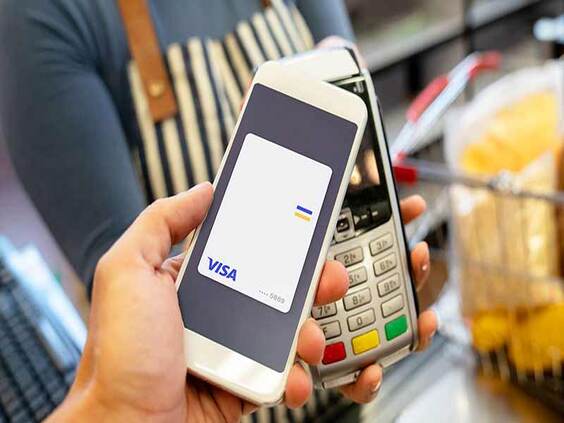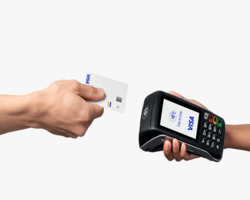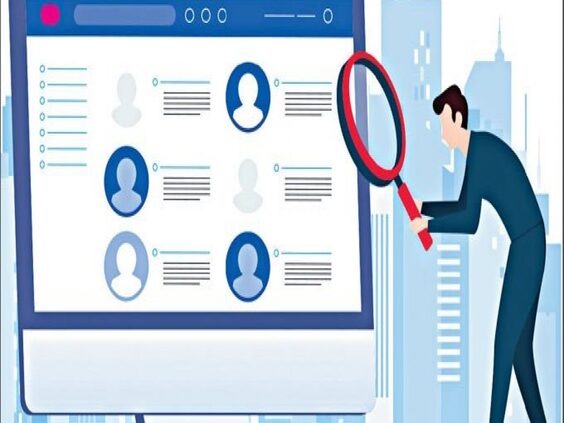

The COVID-19 pandemic accelerated the global shift toward contactless payments, making life easier for everyone—including police officers juggling hectic schedules and on-the-move duties. Just a tap of your card at a POS terminal, and the transaction is done—no need to pull off gloves or touch any keypad. But while convenience is welcome, contactless payments have introduced new threats that every officer must understand and guard against.
According to a 2023 report by the Reserve Bank of India, over 4.5 crore contactless cards are in circulation across the country. With such widespread usage, financial fraudsters have also adapted—refining their techniques to exploit even this secure-seeming technology.
As someone responsible for law enforcement, you must also be vigilant about your own digital security. Here’s a comprehensive guide to ensure that your next tap-to-pay experience doesn’t end in financial loss.
How Contactless Payments Work (And How Criminals Exploit Them)
Contactless payments rely on Radio Frequency Identification (RFID) or Near-Field Communication (NFC) technologies. When your card is brought within 4 cm of a reader, it transmits payment details wirelessly.
No PIN. No swipe. No signature. Just a seamless tap.
But that’s exactly what makes it attractive to criminals.
The Common Threats:
- Skimming with Portable Readers
Just like credit card skimmers at ATMs, fraudsters can use small, concealed POS devices. In crowded places—think trains, fairs, or markets—they can "bump" into you, and extract small amounts without you even realizing.
- Lost or Stolen Card Abuse
Since most banks don’t require PIN authentication for transactions under ₹5,000, anyone who finds your lost card can use it freely—unless you act fast.
- “Man in the Middle” Attacks
Advanced hackers can insert themselves between your card and the reader to intercept and manipulate payment data, potentially bypassing set transaction limits.
Case File: Contactless Payment Fraud Incident in Mumbai (2023)
In one reported case, a police officer in Mumbai discovered 6 consecutive contactless transactions totaling ₹17,800 had been made from his debit card within 40 minutes. The officer had not used the card all day. Investigations revealed that the card was scanned multiple times through a rogue reader on a local train.
Lesson? Criminals don’t need your PIN or your consent—just proximity.
Security Measures Every Police Officer Must Follow
Here are 6 proactive steps that can shield you from falling prey to contactless payment fraud:
1. Use RFID-Blocking Wallets
Protect your card from rogue scanning attempts with RFID-shielded wallets. These are widely available and cost as little as ₹500.
Fun Fact: RFID wallets work like a Faraday cage—blocking electromagnetic signals, making your card invisible to unauthorized readers.
2. Activate Mobile Banking Alerts
Always enable SMS and push notifications for every transaction—even failed ones. It gives you real-time visibility, and you can act before it’s too late.
3. Set Custom Transaction Limits
Most banks allow you to cap the value or number of contactless transactions per day via their mobile apps. Set this limit based on your daily spending habits.
4. Disable Contactless When Not in Use
If your bank app allows it, turn off contactless payment capability when you’re not using it. Just like locking your service weapon—only arm it when you need it.
5. Report Immediately: Use 155260
In case of lost cards or unauthorized transactions, dial the national helpline 155260 immediately. It’s operational across India for financial fraud cases. Additionally, lodge a complaint on the National Cyber Crime Reporting Portal at cybercrime.gov.in.
6. Do Routine “Cyber Hygiene Checks”
Just like morning parade and uniform inspection, take 5 minutes weekly to:
- Review your card statements
- Check if any unknown merchant names appear
- Confirm that contactless is still disabled if you rarely use it
What the Law Says
Under RBI guidelines, customers are not liable for unauthorized transactions reported within 3 working days. But if you delay, you could be partially or fully liable. Therefore, prompt action is not just smart—it’s financially necessary.
Special Note for Policemen
Your profession makes you a high-value target—not just physically, but digitally. Many cybercriminals aim to extract your identity or financial details for impersonation scams. In contactless payment fraud, it starts with just ₹500, but escalates quickly.
Moreover, officers often carry multiple government-issued cards or accounts, making vigilance even more critical. Don’t let a small breach tarnish your credibility or cause inconvenience during duty.
Emerging Trends: Mobile Wallets vs Cards
Though mobile wallets (like Google Pay, PhonePe, etc.) are also contactless, they typically require biometric or PIN confirmation, making them slightly safer. However, avoid storing too many cards in your e-wallet. Stick to 1 or 2 essentials and monitor them regularly.
What to Do If You're a Victim
- Immediately block your card using your banking app or via customer care.
- Dial 155260 and report the fraud.
- Lodge a complaint on cybercrime.gov.in
- Inform your local cyber cell if large amounts are involved or if you suspect a coordinated scam.
- Submit a written complaint at your bank branch and demand an acknowledgment.
Conclusion: Digital Responsibility for Real-Life Heroes
Contactless payments are here to stay. For police officers, they can be a boon—saving time and reducing physical contact during hectic routines. But just as you carry a weapon with training and discipline, your financial tools demand the same respect.
Stay alert. Stay equipped. And above all, stay informed.
In the line of duty, your attention can save lives. In the digital world, that same attention can save your savings.
Cyber Hygiene Foundation
- CyberAwareness CyberSafety
You May Also Like It
Understanding the Growing Threat of Loan Frauds Loan frauds have become
In your role as protectors of law and order, you
Leave A Comment
Don’t worry ! your e-mail address will not published.








0 Comments